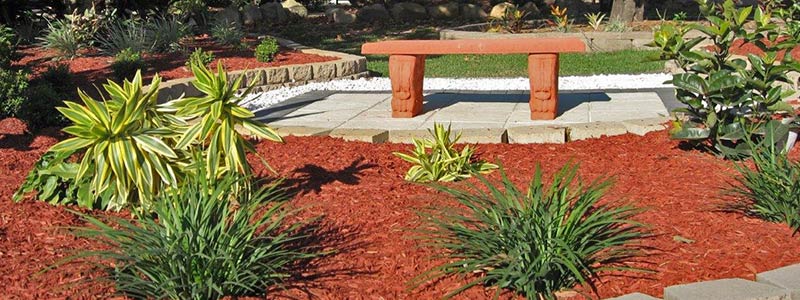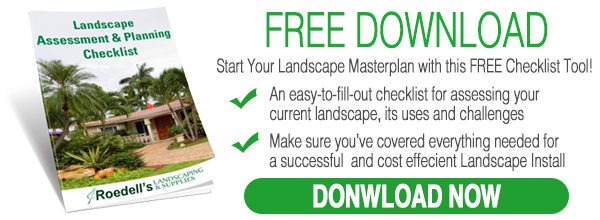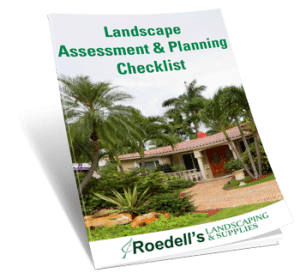8 Pro Tips on How to Mulch
Understanding the benefits of mulching, how much mulch to buy and then learning how to mulch correctly isn’t hard with a little instruction.
We’ll briefly discuss what mulch is comprised of, the benefits of mulching, offer some tips for making your project a success and then show you how to calculate how much mulch to buy.
What is Mulch?
Mulch is a loose, multi-purpose material intended as a surface cover for soil. This type of ground cover not only enhances your landscape, but—if done correctly—it will decidedly help your plants and trees grow stronger and healthier.
Mulch can be made of organic or inorganic material.
Organic mulch consists of formerly living things, such as chopped leaves, straw, compost, wood chips, and other materials.
Inorganic materials for mulching include plastics or rubber. These days, you can even find recycled tires at playgrounds chopped up as mulch, as it is gentler on little knees and elbows during falls.
To determine which mulch to use on your property, consider things such as whether you want a material that will add nutrients to the soil as it decomposes, or if you would prefer a longer-lasting option, such as the inorganic mulches. You might find that you need a more permanent solution for edging a driveway or patio; on the other hand, you may have to consider any curious pets that are often left unsupervised outside and their habits.
Benefits of Mulching
Some of the major benefits of mulching include:
- Regulating soil temperature, which helps protect plants’ delicate root system in all seasons.
- Retaining soil moisture, which helps to cut back on the amount of watering you have to do during those dry Florida winter days. Note that, typically, only 10% of rainwater evaporates under mulched areas; areas without mulch lose up to 80% of rainwater through evaporation
- Plants grown with mulch typically produce higher yields than plants grown without.
- Mulching creates a finished look for your garden, which can greatly improve your curb appeal!
8 Pro Tips to Make Your Mulching Project a Success
Because oftentimes homeowners can get a little carried away when learning how to mulch, follow these tips to ensure the success of your mulching effort.
- Don’t cut corners. It’s best to spend the money to do it right the first time. The few extra dollars you’ll spend in doing it right will make your time and effort look better and last longer.
- To slow down weed growth in the areas you plan to use mulch, first lay down a commercial grade landscape fabric. If you decide to do this later, you’ll have to take up the mulch you already put down!
- To create and keep a clean edge to your mulched areas and to ensure a nice line in your landscape design, use a solid edging around the mulched areas. Metal is best. The extra time and expense to install a good edging will prevent the mulch from spreading outside the beds. It will also keep the mulched areas neat and prevent having the edge of the grass line (if there is one) die off.
- Don’t over mulch! Three to four inches is all you need. Too much mulch can prevent air and water from reaching the soil—and your plants will suffer.
- Avoid creating a “volcano” of mulch around tree trunks (don’t overpile). In fact, you want to have the mulch a little thinner in those spots and spread a few inches away from the trunk. Too much mulch can cause trunk decay or bacteria growth. It can even cause a tree to grow a secondary root system that can wrap around the trunk and choke it.
- Keep in mind that mulch is loose, which creates cavities or pockets where small seeds can sprout and grow. Spray the mulch with an appropriate weed killer once a month.
- Organic mulch will break down over time. You can add a small layer on top once a year to keep it looking fresh and fantastic!
- Remove old mulch every few years and replace it.
How Much Mulch to Buy
To figure out how mulch you need, first, use these formulas to figure out the square footage of the area you plan to mulch.
How to measure square feet
Rectangle: Area = length x width
Circle: Area = 3.1416 x the square of the radius
Triangle: Area = 1/2 x length of base x length of height
Next, use our mulch and rock calculator on our shop page to determine the cubic yards of mulch you’ll need.


